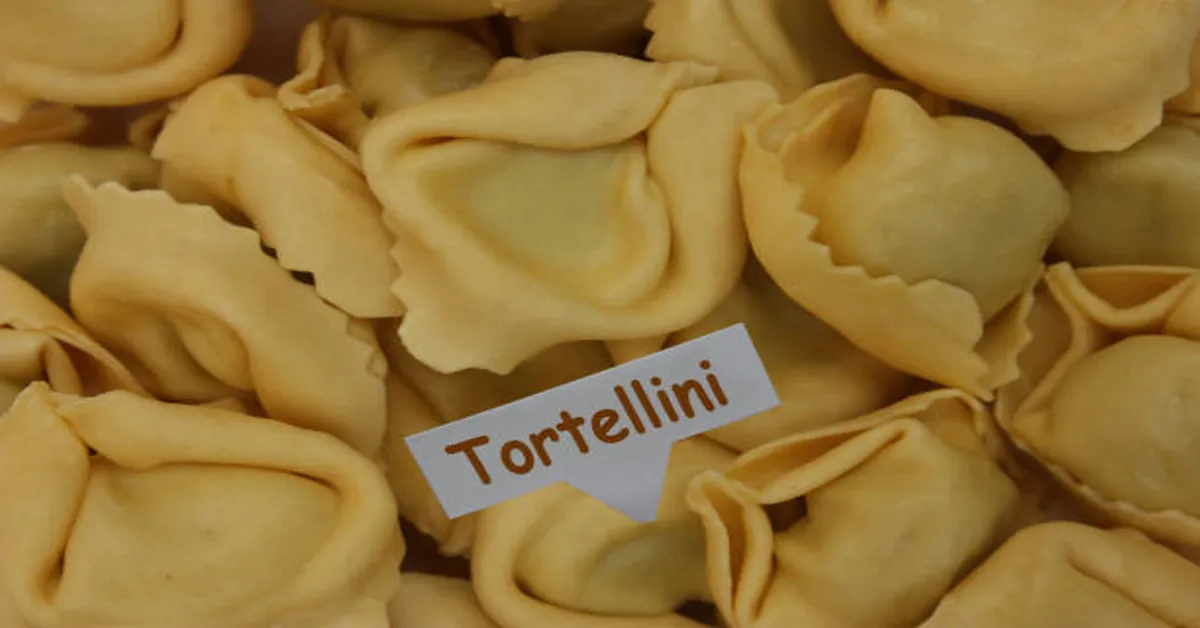Introduction
Italian cuisine is celebrated across the globe for its simplicity, richness, and tradition. Among its most cherished dishes is tortellini, a ring-shaped filled pasta that originated from the Emilia-Romagna region. Making tortellini by hand is a true art that takes time, patience, and skill. However, with the advancement of kitchen technology, machines like the tortellinatrice have significantly simplified and professionalized the process of tortellini production.
A tortellinatrice, also known as a tortellini-making machine, is designed to automate the delicate process of shaping and filling tortellini, offering high precision, speed, and consistency. Whether you are a large-scale pasta manufacturer, a medium-sized restaurant, or even a culinary school, understanding the intricacies of a tortellinatrice can enhance your pasta-making operations and elevate your food production capabilities.
This article provides a comprehensive guide on the tortellinatrice, detailing its design, functionality, usage, advantages, maintenance, and how it has become an indispensable part of professional pasta-making in the modern culinary world.
What is a Tortellinatrice?
The word “tortellinatrice” comes from the Italian word tortellini (a type of stuffed pasta) and the suffix -atrice, indicating a machine or device that performs an action. Hence, tortellinatrice literally means “tortellini maker.” It is a mechanical or electromechanical device that automates the process of forming, filling, and sealing tortellini.
Tortellinatrici (plural of tortellinatrice) vary in size and complexity. Some are small and semi-automatic for artisanal pasta shops, while others are large and fully automated for industrial-scale pasta factories. While traditional tortellini require manual labor for shaping each piece, a tortellinatrice can produce hundreds or even thousands of pieces per hour with remarkable consistency in shape, size, and filling quantity.
Structure and Components of a Tortellinatrice
A typical tortellinatrice consists of several integrated components that work together in harmony to replicate the manual pasta-making process. Here are the major elements found in most commercial machines:
1. Dough Sheeter
The dough sheeter is responsible for flattening the pasta dough into thin sheets of consistent thickness. Proper sheeting is crucial for maintaining the texture and elasticity required to hold the filling and shape of tortellini.
2. Filling System
This part of the machine dispenses a pre-set quantity of filling—usually a mixture of cheese, meat, or vegetables—onto the pasta sheet at regular intervals. Accurate dosing ensures the taste and quality of each tortellino remain uniform.
3. Forming Mechanism
Once the filling is deposited, the machine folds the sheet and seals the dough around the filling. The forming mechanism then shapes the pasta into the distinctive ring or navel form that tortellini are known for. This part of the process is highly intricate and must be precise to prevent leakage or malformed pasta.
4. Cutting and Separation Unit
After forming, the tortellini are cut into individual pieces and separated from the pasta sheet. The waste dough can often be collected and reused in some machines, minimizing production loss.
5. Control Panel
Advanced tortellinatrici are equipped with digital control panels that allow users to set parameters like sheet thickness, filling quantity, and production speed. This improves accuracy and allows for customization depending on the recipe.
Types of Tortellinatrice
Tortellinatrici can be broadly categorized into the following types, each suited for different production needs:
1. Manual Tortellinatrice
These machines require human operation for each step and are often used in small artisanal kitchens. They replicate the hand-made technique more closely but are time-consuming.
2. Semi-Automatic Tortellinatrice
A semi-automatic machine requires some manual inputs—typically in placing the dough sheets or adjusting the fillings—but automates the forming and cutting. It is a good fit for small restaurants or shops with moderate production needs.
3. Fully Automatic Tortellinatrice
This is the most advanced version. Once loaded with dough and filling, it takes care of the entire process from start to finish. It’s ideal for industrial food production and can yield thousands of tortellini per hour.
4. Multi-Function Pasta Machines
Some high-end machines include multiple functionalities to produce different types of filled pasta like ravioli, cappelletti, agnolotti, and tortellini. This offers versatility and cost efficiency in diverse pasta production settings.
Benefits of Using a Tortellinatrice
The advantages of integrating a tortellinatrice into your pasta production setup are numerous. Here’s a look at the most significant benefits:
1. Increased Productivity
Producing tortellini by hand is labor-intensive. A machine can boost output exponentially while maintaining consistent quality, freeing staff for other kitchen or production duties.
2. Enhanced Consistency
Machine-made tortellini are uniform in size, shape, and filling distribution. This consistency is critical for branding, packaging, and customer satisfaction, especially in commercial environments.
3. Labor Efficiency
A single operator can manage a fully automatic tortellinatrice, drastically reducing the need for multiple kitchen workers while also minimizing the chance of human error or fatigue.
4. Hygiene and Safety
Modern machines are made of food-grade stainless steel and are designed for easy cleaning, reducing the risk of contamination. Automated processes also limit human contact with raw ingredients.
5. Customization and Versatility
Tortellinatrici allow manufacturers to adjust size, thickness, filling ratio, and even shape—ideal for accommodating custom orders or developing unique product lines.
How to Operate a Tortellinatrice
Operating a tortellinatrice, especially a semi or fully automatic one, involves a series of carefully monitored steps to ensure optimal pasta quality:
- Prepare the Dough: Use semolina or durum wheat flour mixed with eggs or water. Knead thoroughly until the dough is smooth and elastic.
- Load Dough and Filling: Feed the pasta dough into the sheeter and place the filling mixture into the designated compartment.
- Adjust Settings: Use the control panel to select parameters such as sheet thickness, filling dosage, and tortellini size.
- Start the Machine: Initiate the process. The machine will begin sheeting the dough, depositing the filling, shaping, and cutting.
- Monitor Production: Observe the initial batches for quality assurance. Adjust settings if necessary.
- Collect and Store: Gather the tortellini from the output tray. Store under refrigeration or flash-freeze for longer shelf life.
- Clean the Machine: After production, disassemble and clean all components thoroughly to prevent cross-contamination or buildup.
Materials and Construction
High-quality tortellinatrici are constructed primarily of AISI 304 stainless steel, which is corrosion-resistant, durable, and easy to sanitize. The internal mechanical parts are made of food-grade plastics or hardened steel, ensuring longevity and compliance with food safety regulations.
Many manufacturers design their machines with rounded edges, removable parts, and sealed motors to minimize cleaning time and reduce the risk of contamination.
Maintenance and Troubleshooting
Like all food-processing equipment, tortellinatrici require regular maintenance to operate at peak efficiency. Here’s how to keep the machine in optimal condition:
- Daily Cleaning: After each use, disassemble all parts that came into contact with dough or filling and wash them thoroughly.
- Lubrication: Apply food-grade lubricants to moving parts as specified in the machine’s maintenance manual.
- Regular Inspections: Check for signs of wear and tear on belts, blades, and filling dispensers. Replace worn parts immediately.
- Calibration: Periodically recalibrate the dosing and sheeting mechanisms to maintain accuracy.
- Electrical Checks: For electric models, inspect wiring and digital components regularly to prevent malfunctions.
Common issues include jamming of dough, uneven filling, and mechanical noise. These problems are typically caused by improper dough consistency, incorrect machine settings, or lack of cleaning.
Ideal Settings for Different Fillings
Different tortellini fillings require different handling. Cheese-based fillings are generally softer and flow better through the dosing mechanism, while meat fillings may need to be ground finer to avoid blockages. Vegetable fillings can release water, which affects sealing. It’s crucial to:
- Adjust the consistency of the filling using breadcrumbs, cheese, or starch.
- Avoid using large chunks that may clog the machine.
- Use refrigerated fillings to maintain shape during processing.
Market Trends and Innovation
The demand for fresh, frozen, and ready-to-cook tortellini continues to grow worldwide. In response, manufacturers are investing in smart tortellinatrici equipped with IoT integration, touch-screen controls, and AI-driven filling consistency sensors. Some machines now offer remote diagnostics, data tracking, and production analytics to optimize efficiency.
There’s also growing interest in gluten-free and vegan tortellini, pushing manufacturers to develop machines that handle alternative flours and more delicate doughs.
Choosing the Right Tortellinatrice for Your Needs
When selecting a tortellinatrice, consider the following factors:
- Production Capacity: Choose a machine that matches your daily output requirements.
- Type of Filling: Make sure the machine is compatible with your intended fillings.
- Size and Footprint: Consider space availability in your kitchen or facility.
- Ease of Use: Machines with intuitive controls reduce training time.
- After-Sales Support: Opt for suppliers offering training, spare parts, and technical support.
Sustainability in Pasta Production
Sustainability is becoming a priority in the food industry. Tortellinatrici contribute to eco-friendly production by:
- Reducing Waste: Efficient cutting and reuse of dough scraps lower material loss.
- Energy Efficiency: Modern machines are designed to consume less electricity.
- Lower Water Use: Improved sanitation systems reduce water consumption during cleaning.
Conclusion
The tortellinatrice is more than just a pasta machine—it is a cornerstone of modern Italian food production, blending tradition with technology. Whether you are a boutique pasta maker or a multinational food company, the tortellinatrice offers the perfect solution for producing high-quality, authentic tortellini efficiently and consistently.
Understanding its functions, features, and benefits can help you make an informed decision and improve your overall culinary output. With proper maintenance and usage, a tortellinatrice becomes a long-term investment in both quality and efficiency.
ALSO READ: Adovivo com: Exploring the World of Digital Possibilities
FAQs
1. What is the difference between a tortellinatrice and a ravioli machine?
A tortellinatrice specifically shapes and seals tortellini, which are ring-shaped. Ravioli machines typically produce square or round sealed pasta. While some machines can do both, each has unique forming mechanisms.
2. Can I use a tortellinatrice for gluten-free pasta?
Yes, but it requires adjustments. Gluten-free dough is more fragile, so the machine settings must be adapted to handle softer textures and avoid tearing.
3. How much does a commercial tortellinatrice cost?
Prices vary widely. Small semi-automatic machines may start at a few thousand dollars, while industrial models can cost tens of thousands, depending on capacity and features.
4. Is it easy to clean a tortellinatrice?
Most modern tortellinatrici are designed for easy cleaning, with removable parts and stainless steel surfaces. Daily cleaning is essential to ensure hygiene and durability.
5. Can a tortellinatrice make other types of pasta?
Some advanced models come with interchangeable molds to produce various filled pastas like cappelletti, agnolotti, or mezzelune, offering more versatility.









